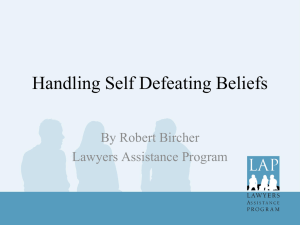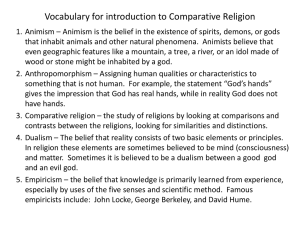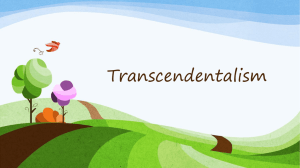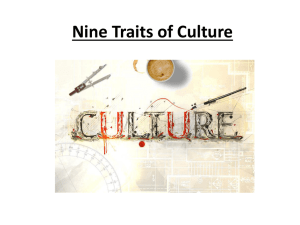Pre-Literate Religions
advertisement
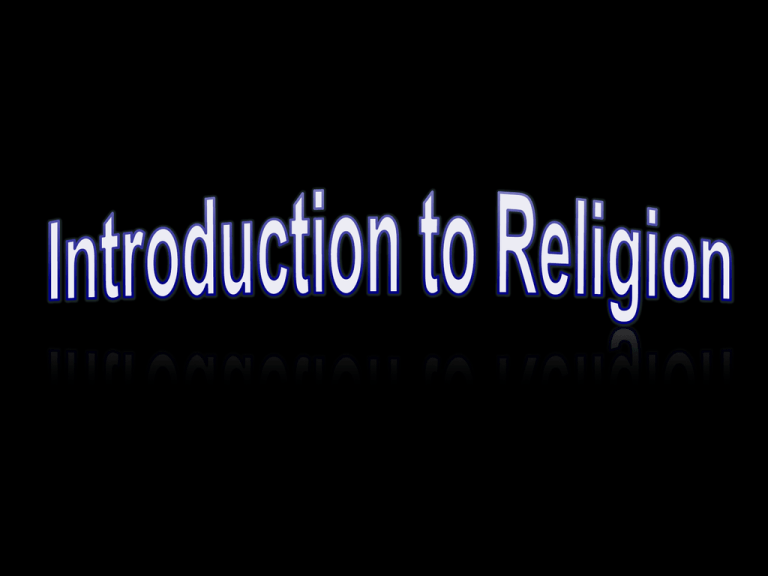
Beliefs • Does everybody believe in the same thing? Why or why not? • Are there some things everybody believes in? Beliefs • • Everyone believes in: • • • People should treat others as they want to be treated People should not kill each other People should not steal…etc. Where do these beliefs come from? • • Parents, grandparents, teachers, the law But --- these beliefs – or ideas & values – are part of our “belief system” Belief Systems • • • A belief system is a way of organizing our beliefs. Our belief systems are important because they help us understand the world around us, guide us on what is important, show us right from wrong, and lead us to behave properly and reasonably. Some of the beliefs that everyone accepts are in the Ten Commandments, therefore, a part of a person’s belief system may come from religion. Religion • • • • Belief in and worshipping or praying to a God or gods. This involves a belief in the supernatural Religion explains to people why and how we are here and what happens to us after we die. Religion also shows us right from wrong and how to live a good life. Philosophy • • • • There are other elements that contribute to people’s belief systems such as philosophy. Comes from Greek: • • 1. philos meaning “friend” or “love/lover” 2. sophia meaning “wisdom” or “knowledge” Philosophy is the search for wisdom or knowledge. A philosophy is a belief system accepted by a culture or social group. How does a new religion or philosophy begin? • • • Belief systems often try to provide answers to problems that exist within a society. They may appear when times are difficult and people are looking for ways to deal with their problems. Often there is a founder who “begins” the movement and for whom the belief system is later named • e.g., Christianity for Jesus Christ, Confucianism for Confucius, and Buddhism for the Buddha Thinking Questions • • • What is the difference between learning about religious beliefs and being taught to believe in a religion? How does religion affect my world today? How does religion affect the world around me? Let’s look at some more vocab • Fables • Fairy Tales • Mythology • What’s the difference? • Can you think of any examples? Fables • • Short Stories passed down from generation to generation that teach lessons and show how people’s behaviours are rewarded or punished. Fables may involve animals that talk and act like people, plants, or forces of nature (eg. wind, rain, thunder) that control events Fairy Tales • Longer stories written especially for children that often include magical characters (eg. elves, fairies, goblins) or animals that have human characteristics. Myths • • A traditional sacred story, typically revolving around the activities of gods and heroes to explain a natural phenomenon, human behaviours, and cultural customs. Comes from the Greek work mythos meaning “word of mouth” Let’s practice • Identify which of the following works is a fable, fairy tale or myth: Why Study Mythology? • • • They contain important values and morals which helps us understand ancient cultures. Myths have survived and endured for entertainment today in comic books and motion pictures. Our world is full of mythological allusions from products, terminology to business. • • For Ex. Roman god of agriculture was Ceres – what do most people eat in the morning? It helps us recognize common archetypes (an original that has been imitated). Pre-Literate Religions What is a Ritual? • • • A repeated act, such as kneeling to pray, performed in a manner dictated by a religion They show reverence for a god or gods. Characteristics of a ritual include: • • • • • • • music dance or movement sacrifice repetition chanting ceremonial clothing a request for assistance or interventions Ritual Today • • • Ritual continues to hold meaning in modern society Rituals are important in daily life Modern societies not only maintain traditional rituals, but they create and accept new ones. • • Mace in Legislature Olympic Torch Sacrifice • • • Refers to the purposeful destruction of something valuable as an offering to the divine. Animal sacrifice were central to every pre-literate religions Human sacrifice was also practiced and was especially important to the Aztecs. Beliefs of Pre-Literate Peoples • • • • A Pre-Literate religion is a set of religious beliefs that is NOT set down in writing in holy books such as the Bible. They did NOT have holy books or complicated oral stories of God’s lives, loves and battles like the ancient Greeks. They did not explain the world with science instead they developed myths to make sense of their world as they knew it, and offered explanations for why humans behaved the way they did. They were Polytheistic, which means they worshipped many gods. Ancestor Worship • • • Early cultures in China, Africa, Malaysia, the South Pacific, and the Americas believed that the dead continue to take interest in the affairs of the living. Reverence to the dead strongly practiced in many Chinese families today. It is believed that deceased family members continue to influence the fortune of the living. Animism • • • • Animism is the belief in supernatural power that organizes the universe. Spirits or gods might live in trees or animals or inanimate objects such as mountains. Followers pray to these gods or spirits for protection. Knocking on wood for good luck comes from the Druid’s. Taboo • • Temple of Refuge, Polynesia • Taboo is based on moral judgments and religious beliefs that strongly prohibit certain social actions. If broken a person is shamed, ridiculed or exiled and can be cleansed through ritual. Traditionally, practiced by the people of the South Pacific. Fetishism • • • Fetishism is the belief that certain objects have supernatural powers. These objects - “fetishes” – are usually idols or statues and may be made from bones, blood, fur, feathers, gems, or special plants. Common in West Africa Mana • • • • Mana is the belief that a person, place, or thing has supernatural qualities. To have mana is to have influence and authority. Traditionally, common belief among the South Pacific people – particularly the Maori of New Zealand. In Maori culture, facial/body tattoos were a sign of great mana and status Totemism • Totemism is a belief that humans have a kinship with a spirit, or totem, such as an animal or plant. • Traditionally, practiced among hunter-gather and mixed farming communities, such as the First Nations of Canada. Turtle and lizard amulets used by the Plains people to protect their babies. - Turtle – long life & endurance - Lizard – fast and elusive Let’s Review • What do pre-literate religions have in common? • • • • • • beliefs are not set in writing do not have complicated oral stories about the gods and their lives do not explain the world through science worship many gods perform rituals offer sacrifices


